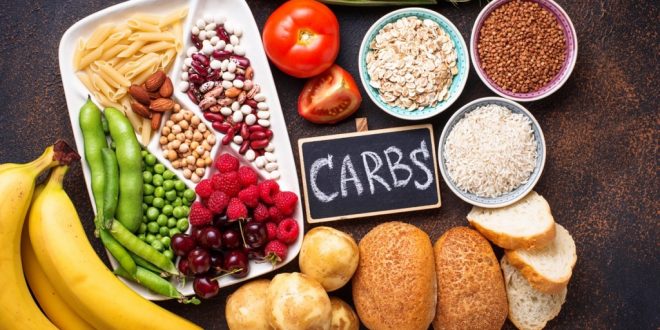Any of numerous substances that are produced by cells and living organisms are called Biomolecule or biological molecule. Biomolecules have a wide range of sizes and structures to perform a vast array of functions. There are four major types of biomolecules, they are- carbohydrates, lipids, nucleic acids and proteins. Carbohydrates are the most abundant of the four.
What is Carbohydrate?
The term Carbohydrate is the Greek word “Saccharide”, which means sugar. In another- the word “carbo” meaning carbon and “hydrate” meaning water. The chemical formula of a carbohydrate is Cx(H2O)y , which seems some carbon(C) with some water molecules (H2O) attached. Hence the word carbohydrate means “Hydrated carbon” or “Watered carbon”. So, Carbohydrates are a group of organic compound consisting of C, H, O usually in a ratio of 1: 2: 1. Example: Glucose, starch, cellulose, glycogen etc.
Best safe and secure cloud storage with password protection
Get Envato Elements, Prime Video, Hotstar and Netflix For Free
Best Money Earning Website 100$ Day
#1 Top ranking article submission website

Carbohydrates are probably the most abundant and widespread organic substances in nature and they are essential constituents of all living things. Green plants produce carbohydrate from carbon dioxide and water with the help of sun light during the photosynthesis process. Recall that plants convert the energy in sunlight to chemical energy in the molecule, glucose. Plants use this glucose to make other larger, more slow- releasing carbohydrates. We eat plants so that we can harvest the energy of glucose to support life’s processes.
Classification of Carbohydrate
Generally, carbohydrates are classified into 3 major groups depending upon their complexity on behaviour of hydrolysis. They are as follows:
1. Monosaccharides
- The simpliest of all soluble carbohydrate and known as simple sugar.
- They cann’t be hydrolozed into a simpler form because they are the building unit of complex carbohydrate.
- The general formula is (CH2O)n.
- Simple sugars are found in grapes, others fruits & honey.
- Three of the most important simple sugars – glucose (also known as dextrose, grape sugar and corn sugar), fructose( fruit sugar) and galactose.
2. Oligosaccharides
- Composed of two to ten smaller units or monosaccharides linked together by covalent/ glycosidic bonds.
- They are a large category and further divides into various subcategories;
- Disaccharides (C12H22O11): e.g., sucrose (table sugar, cane sugar, beet sugar), maltose, lactose (milk sugar), cellobiose
- Trisaccharides (C18H32O16): e.g., raffinose, gentianose
- Tetrasaccharides: e.g, stachynose
- Maltose, lactose, cellobiose all are reducing sugar except sucrose because there is no free aldehyde or ketone group in it but sucrose is widely distributed in all photosynthetic plants.
3. Polysaccharides
- Large molecules that may consist of as many as 10,000 monosaccharide units linked together.
- Have high molecular weight.
- “Cellulose” the principle structural component of plants, is a complex and most common polysaccharide.
- The “Starch” found in plants and the “Glycogen” found in animals are also complex glucose polysaccharides.
- Usually amorphous, tasteless, non sugar & insoluble in water.
Importance of Carbohydrate
- Carbohydrates are the principal source of energy, supplying 60-80% of the caloric requirement of the body.
- The brain and other central nervous system are dependent on glucose for energy because neurons can not burn fat.
- Prevents the breakdown of proteins for energy.
- Their presence is necessary for the normal lipid metabolism.
- Carbohydrates get associated with lipids and proteins to form surface antigens, receptor molecules, vitamins & antibiotics.
- Carbohydrate functions as storage material in the storage organ of plants and in the liver & muscles of animals.
- Provide the skeleton of various organic compound( ‘Cellulose’ in plants and ‘Chitin’ in arthropods).
- The 5 carbon monosaccharide ribose is an essential component of coenzymes and the backbone of genetic molecule known as RNA. The related deoxyribose is a component of DNA.
- Directly involved in the growth and development of crops.
- Carbohydrates also play key role in the fertilization, immune system, preventing pathogenesis, blood clotting & development.
Revised by
- Somudro Mahbub Nasir on 11 July 2021
 Plantlet The Blogging Platform of Department of Botany, University of Dhaka
Plantlet The Blogging Platform of Department of Botany, University of Dhaka






Can you be more specific about the content of your article? After reading it, I still have some doubts. Hope you can help me.